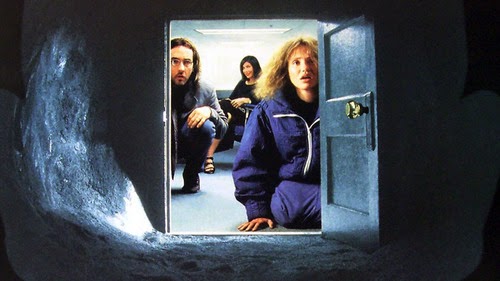An obvious goal would be to eliminate excess, redundant and uninteresting information being presented.
If you notice, social media feeds are very perishable.
We don't often re-scroll to see things again. It's now you see it, now you don't. Tomorrow, most of what you view is all but forgotten. Posts become dinosaurs after a few hours, replaced by a new story every minute.
And these days we are seeing a lot of things we don't want to see.
The interest factor is inconsistent and arguably in decline. How different can a selfie really look in each photo?
Scrolling is largely needed to skip over posts we don't want to see or see for much longer.
It is a big time killer.
It's like skipping over miles of places on a map being scrolled.
We will have probably spent years of our lives scrolling past things we don't wish to view by the time we die.
And for things we do want to see, the posts are often disposable media. We don't often go back to review them. Facebook Timeline is seldom used for this very reason. The posts of today, this minute and the next second keep us busy enough.
So let's imagine a new set of posts where every post is something we want to see.
Tiling windows or tabbing to view pages would actually be faster than scrolling.
But you can only tile or tab so much. So what if as soon as you tap "close" the window just disintegrates like a Mission Impossible message.
The popular Snapchat already employs a system of "disappearing" messages after expiry.
But this time there is a difference, another recommended window appears to replace it, showing something interesting.
If you destroyed a post by accident, we can always consider a "back" button. But let's first consider a search field to find a lost post (or old post). Let's also consider permanently freezing windows you liked or commented on to be cached in your archives.
If we automate disappearing posts by expiry times (for self-destruction), exploration will be even faster. You can also "like" any post to freeze it, skipping any destruction.
The juice of the design will be in how new windows are recommended.
That's the mission if you choose to accept it.
My secret agenda is to figure out a faster way to explore stories geo-spatially. A way to travel place to place without needing to scroll slowly along a map and barely seeing anything - and coming across signs (map pins) that don't really saying anything or tell me where to go to find something cool.
I started looking at displaying windows into a place (instead of non-descript pins) and the idea of not even using a map to show stories at places. This is after spending time to figure out one way to recommend windows nearby and faraway. The next step was to figure out how to view these windows - to jump from one to another fast. I started to become focused on self-destructing windows that led to new windows. A view can clear up for a new window with a prior post bursting.
Is it just as fun to burst a photo?
























